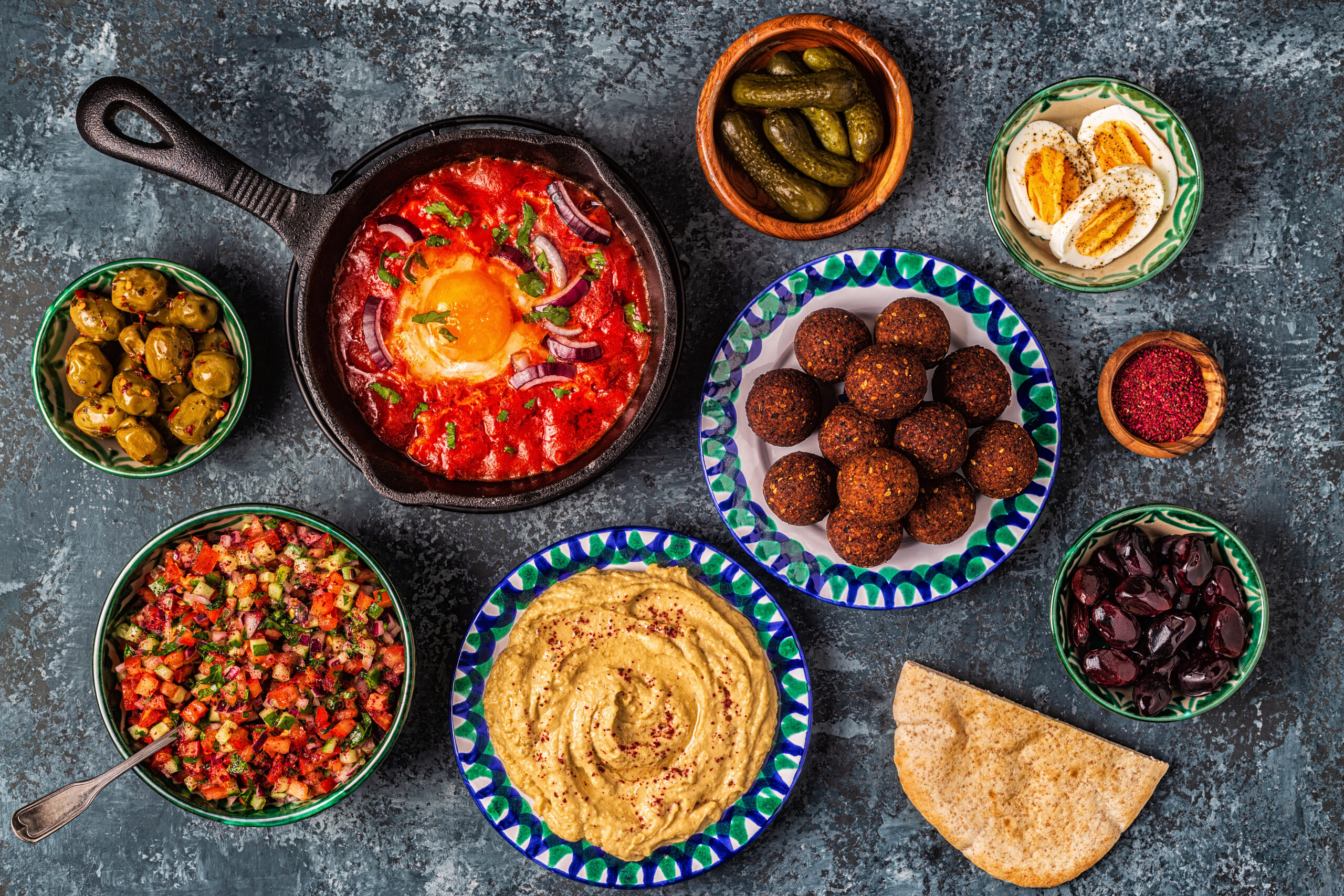Middle Eastern cuisine is a celebration of bold flavors, aromatic spices, and centuries-old culinary traditions passed down through generations. From fragrant rice dishes like mandi and kabsa to sizzling grilled meats and delicate pastries such as baklava, the secret behind their unforgettable taste lies in the spices. These essential ingredients do more than add flavor—they carry the legacy of ancient trade routes, regional identity, and the art of cultural fusion that defines halal food today.
At Spice Gate, we know that the right spices can transform a dish, bringing authentic Middle Eastern flavors to your kitchen. Here’s a look at the essential spices that define this rich and diverse cuisine.
1. Sumac: The Tangy Secret
Sumac is the unsung hero of Middle Eastern cooking. This deep-red spice is made from dried and ground sumac berries, offering a citrusy, slightly tart flavor that enhances everything from meats to salads. Unlike lemon or vinegar, sumac provides acidity without overpowering the dish.
How to Use It:
- Sprinkle over fattoush salad for a zesty kick
- Rub onto grilled meats or kebabs
- Mix into za’atar blends for extra depth
Pro Tip: Sumac is a fantastic alternative to lemon juice in marinades!
2. Za’atar: The Ultimate Spice Blend
Za’atar isn’t just a spice—it’s an experience. This aromatic blend typically includes dried thyme, sesame seeds, sumac, and salt, creating a savory, nutty, and slightly tangy profile. It’s a staple in Levantine cuisine, often enjoyed with olive oil and warm bread.
How to Use It:
- Mix with olive oil and spread over manakish (Middle Eastern flatbread)
- Sprinkle onto hummus or labneh for an herby finish
- Season roasted vegetables or grilled meats
Did You Know? Every Middle Eastern region has its own version of za’atar, with variations in ingredients and flavor balance.
3. Cardamom: The Sweet & Savory Star
Cardamom is a prized spice in both sweet and savory Middle Eastern dishes. With its warm, citrusy, and slightly minty aroma, it adds depth to everything from coffee to stews.
How to Use It:
- Brew it with Arabic coffee or chai for an aromatic touch
- Add to rice dishes like biryani or mansaf
- Use in desserts like baklava or ma’amoul (date-filled cookies)
Fun Fact: Green cardamom is often used in desserts, while black cardamom has a smokier flavor, ideal for savory dishes.
4. Cumin: The Earthy Essential
Cumin’s deep, warm, and slightly nutty flavor is a key component in Middle Eastern spice blends and slow-cooked dishes. Whether used as seeds or ground, it brings a distinct richness to food.
How to Use It:
- Add to falafel mix for extra depth
- Stir into lentil soup for a comforting warmth
- Season grilled meats, especially lamb and chicken
Pro Tip: Toasting cumin seeds before grinding releases their oils, making the flavor even more intense.
5. Saffron: The Golden Treasure
Saffron is the most luxurious spice in Middle Eastern cuisine, known for its delicate floral aroma and vibrant golden color. Used sparingly, it enhances both savory and sweet dishes.
How to Use It:
- Infuse in hot water and drizzle over Persian rice
- Blend into desserts like kunafa or saffron milk pudding
- Add to rich stews and tagines for a refined touch
Did You Know? Saffron is hand-harvested from crocus flowers, making it one of the world’s most expensive spices.
6. Cinnamon: More Than Just Sweetness
Cinnamon plays a unique role in Middle Eastern cooking, appearing in both sweet treats and savory dishes. It adds warmth and complexity without overpowering other flavors.
How to Use It:
- Stir into spiced rice dishes like kabsa or makloubeh
- Use in lamb or beef stews for a subtle sweetness
- Add to desserts like rice pudding or baklava
Pro Tip: In Middle Eastern cuisine, cinnamon is often paired with cardamom, cloves, and nutmeg for a well-rounded spice profile.
Experience Authentic Middle Eastern Flavors with Spice Gate
The heart of Middle Eastern cuisine lies in its spices. Whether you’re preparing a simple hummus or a grand feast, the right blend of flavors will transport you to the bustling markets of Beirut, the aromatic kitchens of Istanbul, or the desert camps of the Arabian Peninsula.
At Spice Gate, we bring you the finest spices to help you create truly authentic dishes. Elevate your cooking and explore the rich culinary traditions of the Middle East—one spice at a time!





0 Comments